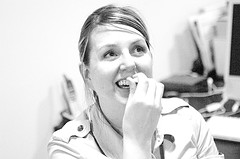Introduction
Lasers used in dentistry are engineered and designed to perform special functions without changing or damaging the surrounding tissues or materials.
History
The functioning of a laser goes back to Albert Einstein’s quantum theory of radiation and includes other theories that help explain the local tissue damage. The first laser was demonstrated in 1960. It was ruby laser, 694nm wavelength. Interest in the medical implications of laser light was high and already in 1967 , some of the first reports appeared on the effects of very low doses of ruby light on biological tissues. In animal studies, it was observed that experimental wounds healed better if irradiated and that even the shaved fur of the experimental animals reappeared faster in the irradiated areas. There appeared to be a biological window for the dose. If too low, there was no effect, if too high there was a suprresive effect. Not much later, the Helium-Neon laser was introduced in research and the results were similar. Later on, diode lasers were introduced and they provide the same results, although some wavelengths appeared to be better for certain indications. In particular, the introduction of infrared lasers improved the optical penetration of the ligh, reaching deeper lying tissues. The first commercially available lasers in the early 80’s were extremely low powered, below 1mW was used, in spite of the fact that the first scientific reports used 25 mW. This partly explains the initial contoversy about therapeutic dosage to be used. With the rapid developement of laser diodes, the powers of therapeutic lasers have changed dramastically and diode lasers today are typically in the range of 50-500 mW. Increased power has not only shortened the treatment time but also improved the therapeutic results.
